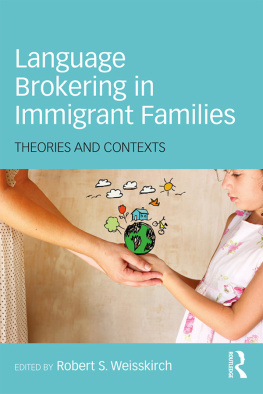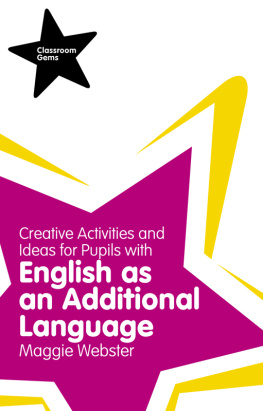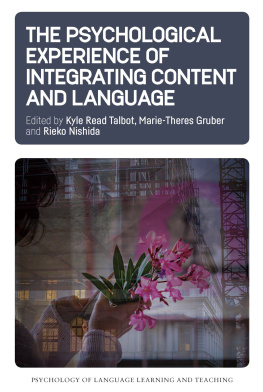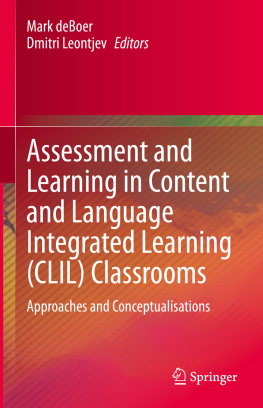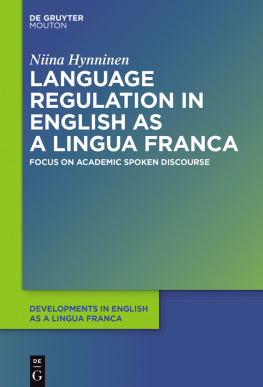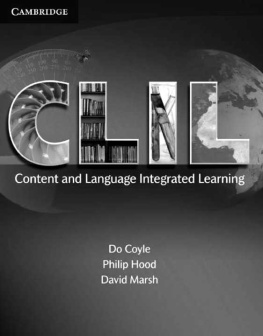1.1 Introduction
Language Across the Curriculum (LAC) and Content and Language Integrated Learning (CLIL) constitute rapidly growing areas of both research and practice in many parts of the world, especially in Asia, Australia and Europe. In recent years, LAC and CLIL are gaining intense attention particularly in contexts where English is learnt as a foreign language or as an additional language (EAL). The global spread of English has arisen from a whole host of historical, political and socio-economic factors. Many Asian societies, with their respective socio-economic contexts, are often infused with a desire for development, modernity and human resource capital for successful participation in the new global economic order. Such capital often includes English with respect to information communication technology, international business and commercial know-how, and science and technology, and very often English comes in a package with all these desirable goodies, or is (mis-)recognized (see discussion in Chap. ) as an indispensable medium for bringing in and acquiring these good things. How to enable students to cross the English dividehow to make English linguistic capital accessible to most of the school population and how to spread English capital more evenly across different social sectors in societyhas become important issues in research on language-in-education policy and practice. These concerns very often occupy priority places in national development agendas. For instance, in many Southeast Asian societies today, serious government attention is given to the option of using English medium education to promote the use and learning of English.
As a cluster of concepts and research studies first developed in Britain and Europe, respectively, LAC and CLIL have been expanded both in their theoretical conceptualizations and in their practice-oriented research to encompass the multifarious ways and contexts in which LAC and CLIL are being re/interpreted, adapted and extended in different contexts in recent years. This is particularly so in English as an additional language (EAL) contexts, where English is not the most familiar language (e.g. it is a second, third or foreign language) of the students and yet it is used as the medium of instruction in content lessons for these students. So far, however, there is no clear road map available and accessible to teachers, students, teacher educators and researchers who are often confronted with and confused by an array of related but slightly different concepts and terminologies arising from different research traditions. An initial road map can be found in Davidson and Williams (2001)s article, which was written over ten years ago, and many new developments have taken place since. An updated road map which not only provides a summary of the recent developments in this area but also critically reviews and integrates theory and practice emerging in related areas is urgently needed given the rising trend to teach and learn content in an additional language at all levels (e.g. kindergarten, and primary, secondary and postsecondary levels), especially in EAL contexts in many parts of the world.
This road map, moreover, must be grounded in a comprehensive and in-depth review of the field and at the same time presented in a language that is accessible to teachers, school administrators, teacher educators, researchers and advanced undergraduate and postgraduate students including both language specialists and content specialists. Daunting as the task seems to be, a modest beginning was made when my colleagues and myself first started the master of education in Language Across the Curriculum (MEd-LAC) Programme at the University of Hong Kong in 2012. Having taught the MEd-LAC Programme for four years and having been confronted with the needs of students from diverse backgrounds: English teachers, science teachers, mathematics teachers, social studies teachers, as well colleagues who are non-language specialists but are teacher educators in the disciplines of science, mathematics and social studies, I feel that it is high time a book was written that critically reviews and integrates existing theories and research findings in this field (which encompasses both LAC and CLIL studies) and charts out a road map that points the way forward for future research and practice in various EAL contexts in the world.
The present book has thus arisen from an immediate and real need, which is expressed by my students, colleagues (who include both language and content teacher educators) and most of all from the communities that my colleagues and I have been serving. In interacting with teachers, school administrators, researchers and teacher educators, I was frequently given questions and requests for a comprehensive road map or book where teachers, school administrators, government language policy makers and teacher educators can refer to for a critical review of the field, some fresh insights into future directions of research and some practical tips on school-based LAC and CLIL practice. This book has thus aimed at contributing to the growing field that addresses the increasing interest in LAC and CLIL in EAL contexts such as Hong Kong, mainland China, Thailand, the Philippines, Taiwan, Malaysia, Japan, and Korea. In many of these places, my colleagues and I have been presenting papers, seminars and workshops, and exchanging research ideas with teachers, teacher educators and researchers working in these areas. Researchers and teachers working in EAL contexts in Europe, South America and Africa might also find the work relevant to them.
1.2 Aims and Organization
It is the aim of the book to offer a road map for the interested student and researcher in what appears to be a swampland (borrowing a metaphor from Christiane Dalton-Puffer) in the fast burgeoning literature of diverse yet overlapping areas of research that can all bear on the work of teachers having to support students learning content in a second, foreign or additional language, and very often in EAL. This book, in particular, aims at making two key contributions to the field. First, with its grounding in research in the past three decades in bilingual education, genre and register analysis, sociolinguistics, functional linguistics and sociocultural theories of language and literacy development, it seeks to critically review and integrate a diverse range of theories and disciplines to generate an accessible set of theoretical insights and principles that can inform teachers, students, parents, policy makers, researchers and teacher educators who are engaged in some form of work related to learning and teaching content in L2 or EAL. Second, the book is grounded in the concrete needs expressed by practitioners in front-line classrooms, school administrators, government policy makers, parents and students who need to tackle the day-to-day challenges and issues confronting them. These issues include how to facilitate the collaboration between content teachers and language teachers or between the content subject panels and the language panels, how to provide language support using a cross-curricular approach to students learning content in an L2, how to design materials that offer that support, how to design classroom scaffolding strategies that address both the content and language learning needs of students, how to raise the language awareness of content teachers, how to raise the content awareness of language teachers, how to design appropriate ways of providing extra support in different school contexts (e.g. through adjunct language classes or through content and language integrated classes; through content-rich language classes or through language-rich content classes), how much of the academic language support should be made through explicit or implicit instruction, or through inductive, discovery or deductive explanatory approaches, how can assessment be designed to give due weight to both the language and content learning outcomes, what is the role of school leadership in facilitating a whole-school approach in the provision of cross-curricular language support and how can parents be involved in this process.



